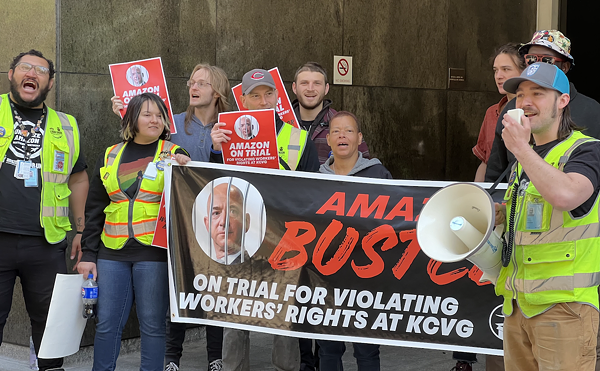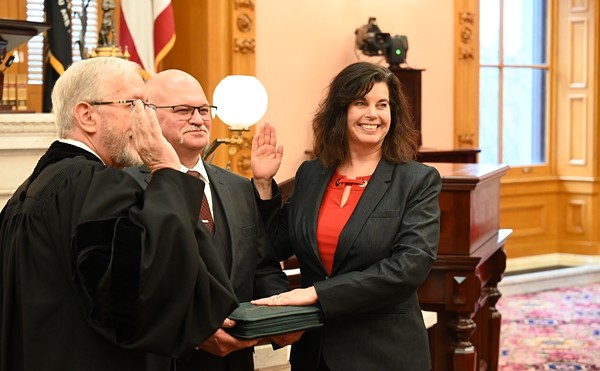Interstate-275 is a lifeline for many Cincinnatians who commute to work and school or whose neighborhoods are separated by the very freeways they use to get to other parts of town. The country’s only auxiliary freeway that crosses through three states, this orbital route is heavily speckled with Cincinnati’s landmark eyesores, including strip malls, gas stations, fast food restaurants and outdated housing developments that can be seen just beyond the thin strips of trees that remain standing alongside the highway.
This scenery is sadly familiar to most Cincinnatians and serves as a fit representation of how I-275, despite its intentions, has been a ticket to fortune for many profiteers and a vacuum of sorts that threatens to suck the life out of our city’s urban center.
Construction on I-275, officially known as The Donald H. Rolf Circle Freeway, began in 1958, three years after President Dwight D. Eisenhower championed the idea of the Interstate Highway Network. This idea was also referred to as “The Grand Plan,” and Ike considered it a revolutionary plan that would “change the face of America.”
From a 21st century perspective, we can see how the plan has indeed altered many facets of our country, but an important question to ask ourselves is if this new face of America is prettier or uglier than it was before most of us had a freeway just beyond our backyard.
The original intent of The Grand Plan was detailed by Eisenhower in 1955, when he declared that “a modern, efficient highway system is essential to meet the needs of our growing population, our expanding economy, and our national security.”
He listed a few other perks as well that would appeal to those who were still haunted by the Great Depression and World War II, claiming that “the country urgently needs a modernized interstate highway system to relieve existing congestion, to provide for the expected growth of motor vehicle traffic, to strengthen the Nation’s defenses, to reduce the toll of human life exacted each year in highway accidents, and to promote economic development.”
James Howard Kunstler, author of The Geography of Nowhere, admires Eisenhower’s concision in stating the aims of the project but says there were some grand flaws with The Grand Plan, which was further developed by retired General Lucius D. Clay, an engineer and a longtime advisor to the president.
“What (The Clay Committee) missed, of course, by definition, were the unintended consequences, the blowback, of the project,” Kunstler says.
What were these consequences? Well, as you sit in a coffee shop or local pub skimming this article while waiting for a friend who’s stuck in traffic, let’s start with the congestion issue.
Kunstler reports that congestion was poorly understood at the time, especially by traffic engineers. These engineers didn’t seriously consider the possibility that building these expensive interstate routes intended to disperse traffic would actually draw more motorists — as well as profit-seeking opportunists — resulting in an even worse mess of road traffic. As Kunstler puts it, engineers didn’t understand that “if you build it, they will come … and come, and come, and come.” Cruise past Tri-County Mall at rush hour (at a maximum speed of three miles per hour, unless you’re in the express lane) if you aren’t convinced the plan failed in this category.
Another significant consequence of The Grand Plan was an onslaught of suburban sprawl, which continues to swallow up Cincinnati’s uncommercialized land. Take a look at West Chester, for example. As Cincinnati and Dayton continue to converge due to suburban development, the West Chester Development Council boasts its community as “the economic center of the Cincinnati-Dayton Metroplex,” calling it a “super-region” that ranks 15th in the nation with a population of nearly 3 million.
“We must realize that American cities were, on-the-whole, not artfully constructed nor beloved,” Kunstler says. “After the Great Depression and war, they had been neglected and became even drearier. The collective image of ‘city life’ in 1952 was represented by Ralph Kramden’s apartment on The Honeymooners TV show. Given the means, it was understandable then that Americans wished to escape it — especially after the ‘total victory’ of the Second World War. Suburbia, in a way, was the present we gave ourselves for winning.”
While those of us who grew up in the suburbs can’t disown the “sheltered” environment — especially if it was a gift from the hands of a triumphant American citizenry — we are left to wonder how the distance between it and the true heart of the city affected our personal development.
“The new suburban habitat proved to be extremely problematical,” Kunstler says. “You got a comprehensive impoverishment of childhood development, not only in the inability of kids to navigate their everyday world, but in the loss of those informal places where kids could play on their own. By the mid-1960s, children (boys especially) were retreating to the world of canned entertainment (and drugs) because their development was being so thwarted. These phenomena I describe are all now familiar pieces of the picture.”
With the construction of our beloved highway loop, our viable cropland has been replaced by strip malls (good sources for picking up high school girls), parking lots (good spots to meet your weed dealer) and an endless number of fast food restaurants (the absolute best places to score some grub after burning one down). In this light, suburbs are nothing short of paradise, if you’re the guy whose worldview is derived strictly from MTV reality shows and prophetic Bob Marley albums.
As for all the other suburbanites out there who just haven’t given peace a chance, the suburbs still have it all: Jr. Bacon Cheeseburgers for 99 cents, coin-operated carwashes, Starbucks, dog parks, mega churches, dollar stores and car dealerships. Left out of these manufactured societies, however, is culture, open-mindedness and a real sense of community (and in many cases, sidewalks).
In essence, Cincinnatians owe a lot to I-275, the main vein surrounding the heart of the city. Unfortunately, this lifeline has come at a great cost that we might not realize yet, and we’re not just talking about tax dollars, although the Ohio Department of Transportation (ODOT) has invested nearly $160 million in current maintenance and widening projects, with more secured for the future.
Our highway loop, along with the other “arteries of commerce,” as they were referred to in 1955, are becoming more clogged with traffic as more suburbs sprout like weeds within a spits distance of the interstate. It’s possible that someday these arteries will be so clogged that circulation will be cut off from the heart of downtown, leaving the central body of cities across the country to die.
“We invested our post-war wealth in a living arrangement that seemed appealing but turned out to have no future,” Kunstler says. “Bottom line: Life is tragic and people collectively sometimes make bad choices.”
James Howard Kunstler's newest book, World Made By Hand, is a novel about America's post-oil future. Go to www.booksense.com to find a local independent retailer.





